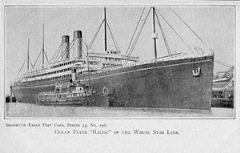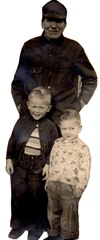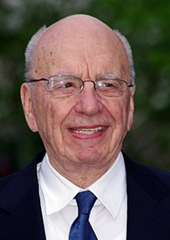In 1558, Queen Elizabeth I came to power, and one of her first acts was to establish herself as head of the English church, rather than the pope. Successfully fighting off Catholic claimants, “Good Queen Bess” ruled for more than half a century, and the Church of England was born.
Two centuries later, Samuel Seabury was a priest of the Church of England, born and bred in the English colony of Connecticut. When the revolutionary war broke out, he remained loyal to the crown and spent some time as a captive of the rebels. But, when the colonists proved victorious, he saw which way the wind was blowing and switched allegiance to the now independent nation. When fellow priests elected him to be their bishop, an ecclesiastical problem arose. There were no other bishops around to consecrate him; thus, he sailed off to England, but the English bishops also refused to consecrate him because Parliament required that all bishops of the Church of England pledge allegiance to the crown. Scottish Anglicans already chafed under English rule, and they sent word that they would consecrate Seabury, and that was how the first bishop of the Episcopal Church was consecrated in 1789, the same year the U.S. Constitution was ratified.
That was also the start of what came to be known as the Anglican Communion. The American Church became the first body of Anglicans, with historical ties to the Church of England, that was not subject to her authority and control. The Archbishop of Canterbury, the head of the Church of England, was recognized as the titular and ceremonial leader.
Today, the Anglican Communion consists of thirty-eight international “Provinces” with recent growth concentrated in the third world. Therein lies the problem with international unity. The third-world Anglicans are decidedly conservative in their views of female ordination and LGBT issues generally, and recent years have seen a conservative splinter of Anglicans internationally and domestically.
The Episcopal Church, the Anglican Province of the United States, is perhaps the most progressive of all thirty-eight provinces along with Canada and Scotland, and the mother church, the Church of England, is a mostly progressive province but with significant conservative dioceses. In 1988, the Episcopal Church consecrated the first female bishop in the Anglican Communion. Diminutive Rev. Barbara Harris reportedly was encouraged to wear a bullet-proof vest during the ceremony. That she was female with liberal views was probably a greater affront to the conservatives than that she was black.
Every ten years, the Archbishop of Canterbury invites approximately 800 Anglican bishops from around the world to a conference named for Lambeth, the district where the Archbishop’s palace is located. At Lambeth 1998, the Archbishop invited eight female bishops from the U.S. and one from Canada. Lambeth ‘98 also witnessed a third-world uprising that bashed the United States and adopted a virulently homophobic resolution.
Outgoing Archbishop of Canterbury Rowan Williams has barely kept the lid on a bubbling cauldron. Several third world provinces refused to attend Lambeth 2008 and set up their own rival conference. The dissident conference also established the Anglican Church in North America as a rival to the Episcopal Church. A few Episcopal Bishops and their dioceses have bolted the Episcopal Church for the conservative alternative, which has not been recognized by the Archbishop of Canterbury or the Anglican Communion.
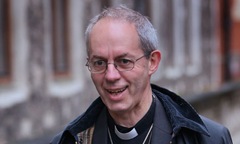 Archbishop Williams suggested that his successor would need the “skin of a rhinoceros.” Whether the Rt. Rev. Justin Welby has that anatomical necessity remains to be seen, but the next Archbishop of Canterbury has urged his own Church of England to follow other progressive provinces in allowing female bishops.
Archbishop Williams suggested that his successor would need the “skin of a rhinoceros.” Whether the Rt. Rev. Justin Welby has that anatomical necessity remains to be seen, but the next Archbishop of Canterbury has urged his own Church of England to follow other progressive provinces in allowing female bishops.
Speaking during a marathon debate ahead of Tuesday afternoon’s vote at Church House in Westminster, Welby, the bishop of Durham, said the measure on the table was “as good as we are going to get”.
But, drawing on his own experience in the evangelical wing of the church, he said he would do all he could to ensure the minority of traditionalists were provided for. The final approval vote – the most important the church has faced in the 20 years since it decided to ordain women as priests – is on a knife-edge.
“It is time to finish the job and vote for this measure,” he said. “But, also, the Church of England needs to show how to develop the mission of the church in a way that demonstrates we can manage diversity of view without division. Diversity in amity; not diversity in enmity.”
Stay tuned.
UPDATE: Polity influences policy. How organizations make policy decisions affects what decisions are made. This principle was proved again yesterday when the Church of England rejected female bishops.
Within the General Synod of the Church of England, three separate constituencies voted on the question. The House of Bishops voted overwhelmingly for (44-3), the clergy voted overwhelmingly for (148-45 77%-23%), but the measure also required a concurrence of 2/3 of the laity, and the house of laity vote failed by a mere six votes (132-74 64% –36%). Church leaders were stunned:
Tony Baldry, the Conservative MP who is responsible for speaking for the synod in parliament, said it would be “extremely difficult, if not impossible” for him to explain the church’s current predicament to MPs. He has previously warned it would be difficult for him to defend the guaranteed place for bishops in the Lords.
While some have suggested the move could even call into question its status as the established church, Baldry said he thought the bigger risk was simple “disinterest”. “I think the great danger for the church following this vote is that it will be increasingly seen as just like any other sect,” he said.
A source close to the culture secretary, Maria Miller, who is also minister for women and equalities, said: “While this is a matter for the church, it’s very disappointing. As we seek to help women fulfil their potential throughout society this ruling would suggest the church is at the very least behind the times.” When the measure was put to the church’s 44 dioceses earlier this year, 42 approved.
A ComRes poll in July found that 74% of respondents thought female clerics should be able to attain the highest reaches of the church. The bishop of Lincoln, Christopher Lowson, said the failed vote could make the church look even more outdated. “This is a very sad day indeed, not just for those of us who support the ministry of women, but for the future of the church, which might very well be gravely damaged by this,” he said.
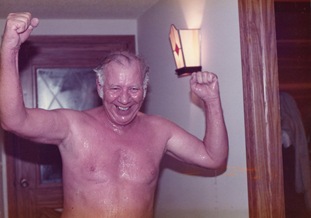

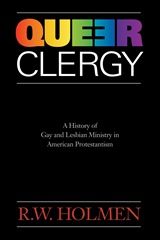
 Chilstrom was raised in a poor Swedish family on the outskirts of Litchfield, Minnesota, but he became the face of the newly-formed Lutheran denomination called the ELCA. The ELCA (Evangelical Lutheran Church in America) came into existence on January 1, 1988 as the result of the merger of the two largest Lutheran denominations in the U.S. (LCA & ALC) together with a moderate splinter from the Missouri Synod (AELC). Chilstrom had been the bishop of the Minnesota Conference of the old LCA before his election to be the first presiding bishop of the ELCA.
Chilstrom was raised in a poor Swedish family on the outskirts of Litchfield, Minnesota, but he became the face of the newly-formed Lutheran denomination called the ELCA. The ELCA (Evangelical Lutheran Church in America) came into existence on January 1, 1988 as the result of the merger of the two largest Lutheran denominations in the U.S. (LCA & ALC) together with a moderate splinter from the Missouri Synod (AELC). Chilstrom had been the bishop of the Minnesota Conference of the old LCA before his election to be the first presiding bishop of the ELCA.


